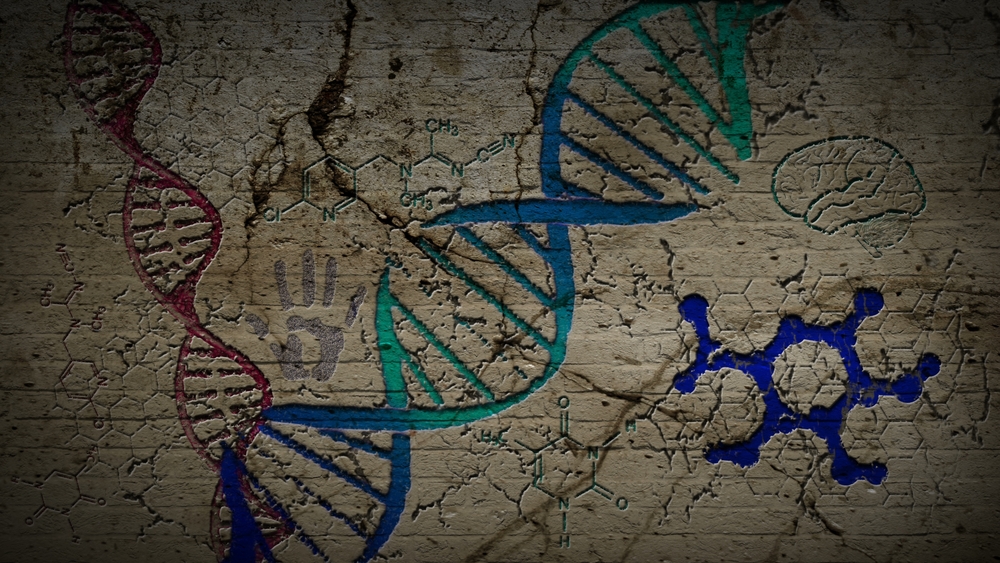
At a Look
- Researchers discovered that stretches of viral DNA lengthy embedded within the human genome can produce proteins that assist block an infection by viruses.
- Additional identification and research of those protecting virus-based proteins might present new insights for preventing viral infections.
Practically one-tenth of the human genome accommodates snippets of viral DNA left over from historic infections. These DNA fragments, known as endogenous retroviruses (ERVs), have been handed alongside and modified over tens of millions of years of evolution. A lot of this viral DNA has eroded over time and is unlikely to have any operate. However many embedded viral genes stay partly intact inside the human genome. Some have developed to turn into helpful human genes.
Among the many doubtlessly helpful DNA snippets from viruses are these encoding envelope proteins. Envelope proteins are usually discovered on the floor of viruses. They’ll latch onto cell-surface receptors, offering a gateway to viral entry. Earlier research discovered that ERV-derived envelope proteins within the genomes of mice, cats, and sheep can block invasion by trendy viruses. They do that by binding to cell-surface receptors and blocking entry by incoming viruses. However this had not been proven in people.
To be taught concerning the virus-fighting potential of human ERVs, a analysis workforce led by Dr. Cedric Feschotte of Cornell College scanned the human genome for sequences that may code for receptor-binding parts of envelope proteins. Outcomes had been reported in Science on October 28, 2022.
The workforce recognized greater than 1,500 sequences, together with about 20 beforehand studied as human genes. Additional evaluation confirmed that a lot of the sequences gave the impression to be expressed, or turned on, in a wide range of human tissues, mostly in embryonic and immune cells.
The scientists took a more in-depth have a look at one of many genes, known as Suppressyn, to evaluate its antiviral potential. They discovered that Suppressyn is very expressed within the early embryo and growing human placenta. The gene stays energetic because the fetus grows. As a result of the growing embryo will be particularly weak to viral an infection, the scientists suspected that the prevalence of Suppressyn hinted at a protecting function.
The operate of the Suppressyn protein is poorly understood, however it’s identified to bind to a cell-surface receptor known as ASCT2. As a result of ASCT2 is the receptor for a broad group of viruses known as kind D retroviruses, the researchers hypothesized that Suppressyn may block these viruses from getting into human cells.
To evaluate Suppressyn’s protecting capability, the researchers uncovered human placenta-derived cells to a sort D retrovirus and located they had been proof against an infection. In distinction, the virus might efficiently infect different varieties of human tissues that didn’t specific Suppressyn. When Suppressyn was faraway from the placental cells, they turned vulnerable to an infection. When Suppression was reintroduced, safety was restored. These findings counsel that Suppressyn is outcompeting kind D viruses in binding to ASCT2 receptors, thereby stopping viral entry to cells.
The research gives proof of precept that an ERV-derived envelope protein can defend in opposition to an infection in human cells. The research additionally recognized lots of of ERV-derived sequences that may now be investigated for antiviral properties.
“The outcomes present that within the human genome, we now have a reservoir of proteins which have the potential to dam a broad vary of viruses,” Feschotte says.
—by Vicki Contie
References: Evolution and antiviral exercise of a human protein of retroviral origin. Frank JA, Singh M, Cullen HB, Kirou RA, Benkaddour-Boumzaouad M, Cortes JL, Garcia Pérez J, Coyne CB, Feschotte C. Science. 2022 Oct 28;378(6618):422-428. doi: 10.1126/science.abq7871. Epub 2022 Oct 27. PMID: 36302021.
Funding: NIH’s Nationwide Institute of Normal Medical Sciences (NIGMS); Champalimaud Basis; Wellcome Belief; European Analysis Council; Howard Hughes Medical Institute; non-public donations.